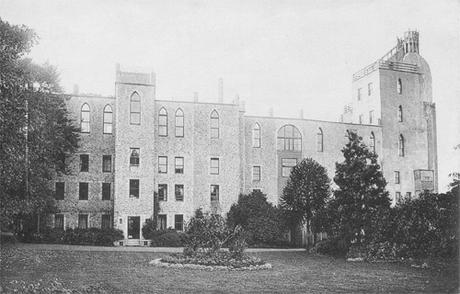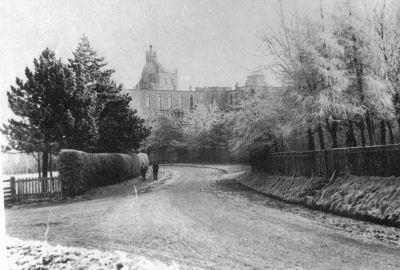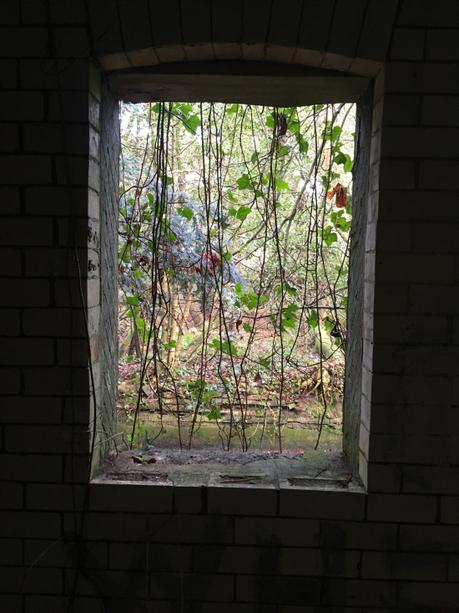
I went for a walk in the woods by my sister’s house this morning. The sky was a bright, brittle white and the air crisp and cold. Tall trunks of bare, rain-blackened trees towered up around us as we squelched through the mud, showers of droplets scattering as we brushed through the bracken and evergreen bushes that encroached onto our path. I love exploring nature in every season, and I’ve walked in these woods many times before, but this time, I was on a special mission. My brother-in-law has recently found out that these woods hide the remains of an enormous stately home that was destroyed after the war, and I was determined to see what had been left behind.
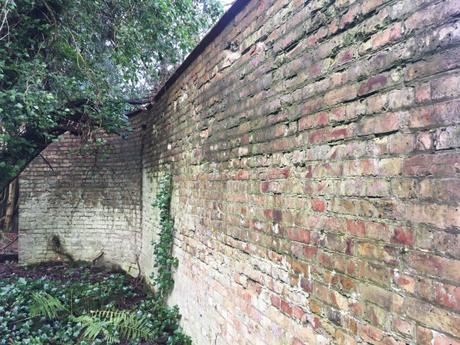
Ducking underneath fallen branches and wading through piles of leaf mulch, we left the well-trodden path and headed off-piste. My brother-in-law knew that there were the remains of a swimming pool somewhere, and before long, we found it, complete with its largely intact pool house, still lined with its white ceramic tiles and its roof trimmed with rotting gingerbread fretwork. The pool’s sides were crumbing, and its base clotted with a decades-thick layer of muddy sludge, but the curve of its ends could still be seen, and with eyes half-closed, you could imagine how magnificent this place must once have been: a pool, hidden in a glade in a lush garden, with a fairytale cottage alongside as a changing room…what parties they must have had there, what long, sunny afternoons. Just visible, when we scraped away some of the mud from the pool house floor, was an intricate mosaic pattern; I can’t help but wonder if the base of the pool would have had a similar mosaic design, now hidden by so much vegetation that it would take a team of people with a digger to unearth its treasures.
Dotted around this area are bits of walls, and intriguing curved trenches with pipe work poking out that promised an irrigation system for what once must have been a magnificent garden. For, even if you don’t find the ruins, what reveals the former presence of a grand mansion are the plants and trees that are nestled in this rapidly re-wilding wood, plants that could never have arrived here except for having been brought by human design. There is an enormous redwood tree, rhododendron bushes, and a huge variety of different trees that were once planted to create color and variety in a landscape that was designed to delight and amuse its owners. I don’t know enough about plants to spot the unnatural interlopers from the indigenous species, but my brother-in-law does, and he was showing me all sorts of plants and trees that didn’t belong in the local landscape. Once you spot these, you can start to work out which plants have grown up and smothered the original layout since the garden’s destruction, and how lovely, colourful and full of delicious scent this landscape must have been. It is also rather sobering to see how quickly what has taken decades to create by human hands is utterly obliterated by nature.
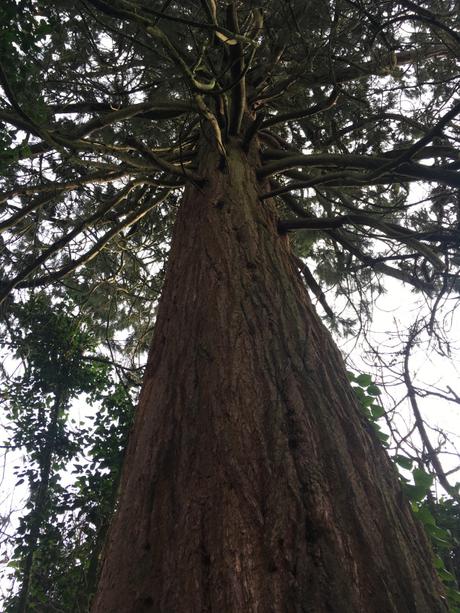
According to my research, a silk merchant called James Vavasseur bought what was a quite attractive large house and garden in the rural Kentish village of Knockholt in the late nineteenth century, and decided to rebuild it entirely, creating an enormous and incredibly ugly barn of a house with a tower that offered spectacular views of London (the village is the highest point in Kent, and you can see the London skyline, several miles away, on a clear day). The locals thought it was hideous, apparently, and called it Vavasseur’s folly, and photos I’ve been able to find show they weren’t far wrong. Vavasseur and his wife died at the turn of the century, leaving their two maiden daughters to live in the house that was already becoming very difficult to keep up. When the last of the daughters died in 1940, the house was in a bad state, and it was eventually dismantled in 1942, after having been damaged by a bomb during the war.
Even though the house was not an example of the finest architecture, I’d still love to be able to find out more about what it looked like. I’m already imagining myself in the summer holidays next year, dungarees and wellingtons on, trowel and brushes strapped to my tool belt, running my very own Time Team style archaeological dig. What kinds of treasure might be sitting beneath the surface of the woodland here, ready to help reconstruct the lives that were once lived in Vavasseur’s ridiculous folly? Maybe, in a few months, I might just be able to find out…
